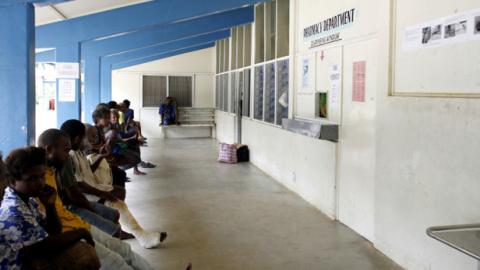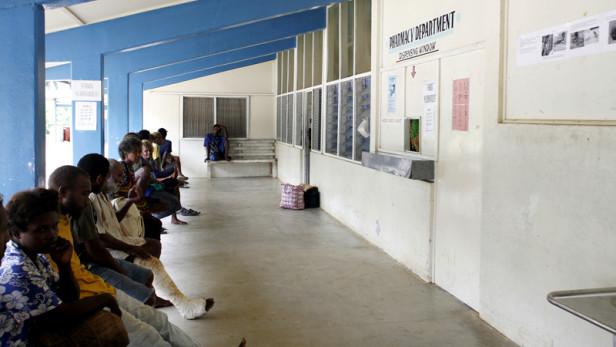
This article by Jenny Lei Ravelo was originally published on Devex at the following link: https://www.devex.com/news/how-should-we-measure-access-to-health-care-87862
Nearly 300 civil society organizations working in global health are lobbying United Nations member states to undo proposed changes in the measurement of universal health coverage as part of the newly approved Sustainable Development Goals.
Advocates who had pushed for the UHC to be included in the SDGs now say the revised indicator won’t accurately capture what proportion of the population is able to access health care without suffering financially.
Among those concerned are World Health Organization Assistant Director-General Marie-Paul Kieny and World Bank Vice President for Human Development Keith Hansen, who expressed “major reservations” on the revised proposed indicator in a letter addressed to the director of the U.N. Statistics Division and the co-chairs of an Inter Agency Expert Group on the SDGs. In a letter seen by Devex, they argue that the new indicator is “not a valid measure of financial risk protection.”
The IAEG recently changed one of the two indicators for SDG target 3.8 — “to achieve universal health coverage, including financial risk protection, access to quality essential health care services, and access to safe, effective, quality, and affordable essential medicines and vaccines for all” — to be defined as the “number of people covered by health insurance or public health system per 1,000 population.”
Previously, the indicator was defined as the “fraction of the population protected against catastrophic/impoverishing out-of-pocket health expenditure.” That measure had been developed by the World Bank and the WHO over a three-year process through dozens of consultations and case studies.
The group of 22 U.N. member countries is meeting in Mexico, in part to review the indicators and put up mechanisms for revisions, according to the provisional agenda. Some CSOs say they expect the meeting in Mexico to finalize the indicators.
Any indicator, Kieny and Hansen said, should be able to show the “magnitude and distribution of household health spending,” which can be seen through household surveys that are already being produced “regularly in virtually every country.”
The letter, which is not dated in the text seen by Devex, said that the use of “coverage of public health systems” in the revised indicator was based on a “promised entitlement rather than observable data.”
CSOs agree and are reaching out to participating members of the IAEG through phone calls and letters to lobby for the original indicators.
“Insurance is not a measure or guarantee of financial risk protection — in a number of
countries the introduction of insurance schemes has not reduced out-of-pocket payments or provided protection against catastrophic health expenditure,” wrote the undersigned list of CSOs in a letter dated Feb. 29 and addressed to both the IAEG and the U.N. Statistics Division, which will be making the final decision on the indicators end of this month.
A change in measurement
CSOs say they are uncertain why the UHC indicator was revised. Health advocates told Devex that some member states had raised concerns about the difficulty of collecting data for the original indicator. Others may not have been eager to release such data, the advocates speculate.
“I think it’s a fear of measurement burden, which is already happening no matter what, because we agreed to 169 targets, so they should have seen this coming,” said one health advocate involved in lobbying the IAEG, speaking under condition of anonymity.
Others advocates said the change could have been made out of confusion over the indicators. The UHC indicators were meant to have two components: access to health services and financial protection.
In a word document following an open consultation in December on the “gray” indicators, or those that needed further discussion, Devex found that opinions were split between those countries and organizations supporting the original indicator and those objecting to it.
The Central Statistical Office of Poland, for example, argued that it would be difficult to collect the data needed to calculate the indicator, and that current country measures in place only cover this financial protection risks in a “very small extent.” Hungary’s Central Statistical Office, meanwhile, suggested changing the indicator to monitoring the “rate of entitled persons to requisition of health services.”
In an attempt to resolve the impasse, WHO and the World Bank proposed in their letter to revise the measure to “household health expenditure as a percentage of total household income [or expenditure or consumption].”
So far, however, there is little indication the measure will change. On Tuesday, at the start of the annual meetings of the U.N. Statistical Commission in New York, 40 speakers took the floor to have their say on the indicators. No one opposed the full IAEG proposal, although some made comments on aspects they did not agree with, including on the topic of UHC, according to Luisa Hanna, senior health policy and research adviser at Save the Children.
“We really need to ramp up [our advocacy] efforts on this ahead of the IAEG meeting in Mexico,” she told Devex.
Deceptive data
Advocates of the original indicator argue that having health insurance doesn’t always guarantee access to affordable care.
Health insurance can at times widen inequalities, the organizations argue. In some low- and middle-income countries, for example, governments can afford to cover only a limited proportion of the population. Others have tiered health schemes, with those subsidized by government offering only limited benefits.
Ghana is one example of a country that has struggled to scale up its health coverage, said Anna Marriott, public services policy adviser for Oxfam Great Britain. In 2003, the government promised to deliver UHC through its National Health Insurance Scheme. But a decade following its launch, the scheme covered just 36 percent of the population, with a majority still paying some amount of out-of-pocket expenses, according to Oxfam’s 2013 briefing paper on UHC. That number, Marriott said, still stands today.
“Large numbers of Ghanaians cannot afford the NHIS premiums, which range from $3 to $22 per year,” Marriot said. “So while every citizen pays for the NHIS through a 2.5 percent levy on VAT, the majority of families on low incomes are not enrolled in the NHIS and therefore do not benefit.”
In India, a National Health Insurance Scheme for people under the poverty line offers $447 for a family of five. The government recently promised to increase this amount to $1,490, said Pallavi Gupta, Oxfam health program coordinator in India. However, the coverage is only available for in-patient services, covering just hospitalization costs and not medicines, for example.
In addition to masking inequalities in coverage, proponents of the original indicator says that the new measure is simply inaccurate.
Simon Wright, head of child survival at Save the Children, said most countries have legal or constitutional guarantees of health coverage under the guise of a “public health system,” which would allow them to report that their coverage for this is 100 percent, when the reality on the ground may be different.
Data in context
The debate on indicators is nothing new, but it is particularly pointed given past experience with the Millennium Development Goals, which at times faced criticism for focusing on quantity over quality. For example, universal primary education measured enrollment rates and the proportion of pupils who finish primary education. Another indicator measured literacy rates of youth aged 15-24 but it was less clear how these data were collected.
Advocates, like Wright, are hopeful UHC will not fall in the same category. But CSOs have raised concerns throughout the indicator process about the lack of access to decision-makers, the lack of transparency, and the general feeling that the process was too rushed.
Indeed, the UHC indicator on financial protection is just one of the many under scrutiny.
Some advocacy groups are pushing for the inclusion of an indicator on health worker density. Others meanwhile want more specifics with regards to UHC, for example including surgical and anesthetic care.
The World Federation of Societies and Anaesthesiologists noted that 33 million people face catastrophic health expenditure in paying for surgery and anesthesia, according to the Lancet Commission on Global Surgery report published in 2015. The WHO and World Bank define catastrophic out-of-pocket health expenditure as direct payments made to health care providers that are equal to or exceed 25 percent of a household’s total consumption expenditure.
The debate on the indicators is just the start: soon, countries will have to adopt the SDGs into their national plans, with all 169 indicators.
